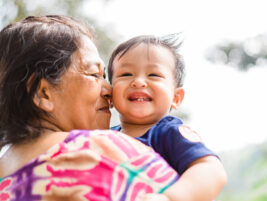“The artificial womb”, by Henri Atlan (Editions du Seuil, Coll. “Points”, Paris, 2005, 2007)
Having recently participated, in two work forces on the difficult issue of what is called in France “Gestation for the Other”, I have realized the extent to which Henri Atlan’s book, “The artificial womb”, opens for us reflective paths in bioethics. Physician and biologist, philosopher, author of many books in cellular biology, biophysics, and artificial intelligence, H. Atlan is Professor Emeritus in Paris as well as in Jerusalem. He is also Director of Studies in Philosophy of the Biology, and is involved in a very stimulating thought process on the development of sciences.
Published in 2005, this book has been reprinted in 2007, in the midst of a reform in the French law on Bioethics, with a new preface added by the author. In this preface, he emphasizes the fact that development of new techniques for medically- assisted procreation (MAP), creates a new situation where “parenthood, in part biological-based, becomes more and more a societal construct”. This remark echoes with the anthropologist Maurice Godelier’s (2007) statement that “one needs always more than a man and a woman to make a child”.
Atlan’s book is especially interesting, not because it explains the scientific techniques of ectogenesis (full pregnancy outside of the woman’s body), but because its promotes an in-depth reflection on the impact of ectogenesis on some of our basic concepts, as well as on our social, cultural and religious positions.
Up to now, only the beginning and the end of the pregnancy can happen outside of the mother’s body: after in vitro fertilization, the fertilized egg can develop in vitro until the stage of the blastocyste (5th day, or D5), and a prematurely born fetus can live in an incubator from the gestational age of 24 weeks (W24). Full ectogenesis therefore requires to fill this gap between D5 and W24. Atlan thinks it is only a matter of time, though it is still very uncertain how long it will take to develop the necessary biological techniques (10, 20, 50 or 100 years…). In Atlan’s view, as soon as it is possible, it will happen.
If so, we can, we must, therefore, already now, think about the multiple implications of this development of things and techniques, thanks to Atlan’s clever and subtle analysis. Indeed, the biological advances that will enable the creation of artificial wombs, are, and probably will be, much less revolutionary than were those that led to the contraceptive pill, the MAP, and the cloning techniques, because they will need to deal only with the growth conditions of the fertilized egg, and not with its creation.
It is beyond the scope of this book review to go into the details of Atlan’s thought, but several strong points can be outlined: When can/should we speak of an embryo, or when does the gamete become an embryo? Up to now, the criteria is the successful in utero implantation. As soon as the uterus is artificial, we will need to rethink this fundamental ontogenetic question. To answer the question of the person, the Anglo-Saxons have invented the notion of “pre-embryo”, meaning the first postfertilization 14 days. The full ectogenesis will completely change this question of “threshold” very much artificial, with quite radical religious, philosophical and legal implications.
What impact will the artificial womb have on the issues around reproductive cloning? Indeed, one of the limiting factors in the human cloning process is the number of procreative women. With the advance of artificial wombs, this obstacle becomes much less relevant, and human cloning will become more feasible… The access to artificial wombs will open the possibility of procreation not only with no pregnancy, but also without women… Consequently, the meaning and the ethical implications of abortion, will completely change. Women will be able to give up motherhood at whatever stage of the in vitro pregnancy, without having to kill the fetus. The whole domain of studying the fetus-mother interactions will also be radically changed, as one will be able to compare in vivo and in vitro pregnancies…
What will be the specific cultural, social and religious consequences of this new procreation technique, that will create, no doubt, a deep fissure in the history of parenthood? These are only some of the questions treated by this concise but very dense book, and are pertinent, not only to reproductive biologist scientists, but to any citizen who cares about humanity in general.
It is therefore clear why the first chapter of the book starts with the mention of Aldous Huxley’s famous book “ The Best World”, because it is about how a whole social organization changes with the introduction of a new technique of that kind. Thank you again to Henri Atlan for bringing us these thoughtful insights, that are essential to the accompaniment of revolutionary techniques, which, without it, may become very dangerous on the anthropology level.
The Israeli WAIMH Affiliate is proud of having among its active and pioneer members, our colleague, Miri Keren, who represents a double important filiation, since she is both the heritor and the spiritual daughter of Sam Tyano, and… the biological daughter… of Henri Atlan.
Reference
M. Godelier. (2007). Au fondement des sociétés humaines – ce que nous apprend l’anthrophologie (The foundation of human sciences – what we learn from anthropology). Editions Albin Michel, Paris, 2007.
Book Review: “The artificial womb”, by Henri Atlan
Authors
Golse, Bernard, Child and Adolescent psychiatrist
France








